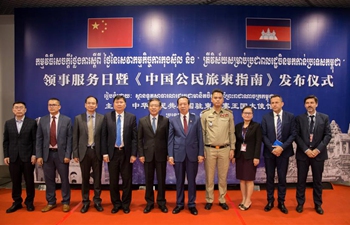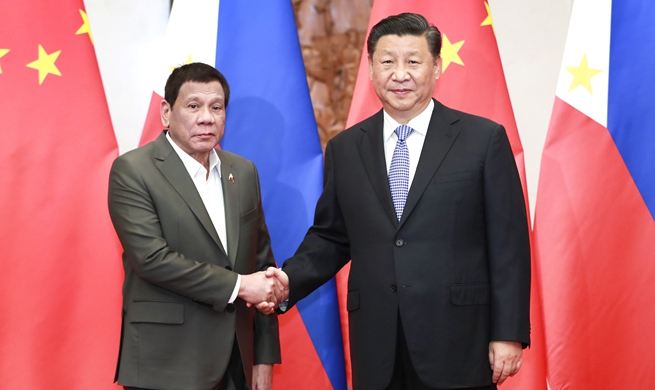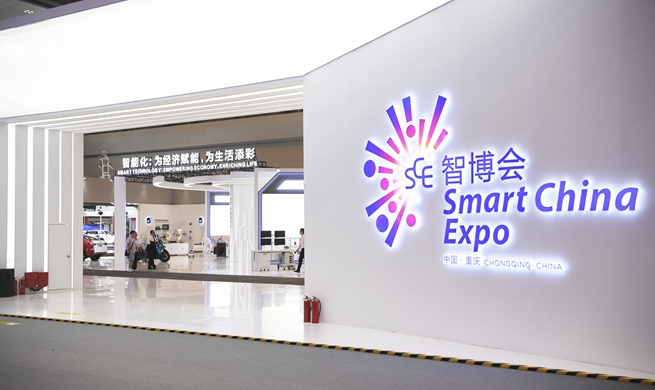by Xinhua writers Tian Sulei, Li Xiaoling
SHENZHEN, Aug. 30 (Xinhua) -- At 9:00 p.m. on a Sunday night, the Sisyphe bookstore at YT Holiday Plaza of Shenzhen was still filled with people.
Bookstores and libraries are usually busy on weekends in this booming southern Chinese city, famous for its hi-tech industry as well as people's love for reading.
GLOBAL MODEL FOR PROMOTION OF READING
In October 2013, UNESCO named Shenzhen a global model for the promotion of reading.
In Shenzhen, reading has become part of everyday life thanks to persistent government promotion and local people's appetite for knowledge.
During weekends, bookstores and libraries are usually busy. Parents and kids are often seen spending their time together at bookstores.
November is the reading month in Shenzhen every year. During the month, hundreds of reading activities are held, including forums, lectures, poetry reading, book donations, and recommendations of must-read books by celebrities.
"It's a festival for readers," said Yin Changlong, head of Shenzhen Reading Association.
He said the festival sends a strong message that reading is a noble thing here in this city.
Emphasis on the value of reading could be felt in many places in the city. Above the entrance to the Luohu Book Mall, there are signs that read: Reading and everything done for readers are noble.
According to a survey conducted by Shenzhen University, each Shenzhen citizen read 18.44 books on average last year, well above the national average.
READING UPLIFTS CITY
"Every time I came here, the local people's enthusiasm for reading touched me deeply. Shenzhen truly has a culture of reading," said Zhou Guoping, a well-known writer and scholar.
Many see this as a major factor behind Shenzhen's quick rise to a modern international metropolis.
The city came into being in 1979 on the land of a rural town, starting with a meager GDP less than 0.2 percent of that in Hong Kong. It exhibited phenomenal growth and by 2018, its GDP had surpassed Hong Kong and hit 2.42 trillion yuan.
It is now one of the most prosperous cities in Asia, featuring new and high-tech, financial, logistics and cultural and creative industries.
Yin said the city's persistent promotion of reading among the public has played an important part in this process.
"Love of reading transforms people. You don't see people quarreling in a bookstore, do you?" said Yin, who is also general manager of Shenzhen Publication and Distribution Group.
With the love of reading comes a more civilized society, more knowledgeable citizens and more creative power for the city, he added.
Wang Jingsheng, the chief advisor to the organizing committee of Shenzhen Reading Month, said Shenzhen's economic prowess has much to do with its dynamic reading culture.
"Reading is key to personal growth. It helps to nurture scientific spirit, reason and humanistic spirit that is closely linked with creativity," stated Wang.
"Reading and the dynamic creative power are two salient hallmarks of Shenzhen. They constitute long-lasting sources of strength for the city's prosperity," he expressed.
In addition, Wang said reading has imbued the city with the confidence and strength to edge into the top-ranking cities of the world.
GOVERNMENT PLAYS CRUCIAL ROLE
The enthusiasm for reading among the public is generally attributed to two major factors. First, Shenzhen is a young city of migrants, who are eager to absorb knowledge to cope with fierce competition. Second, vigorous promotion of reading by the government.
Shenzhen is widely believed to be the first city in China to have a reading festival, namely the Shenzhen Reading Month in November, launched in 2000.
More than 10 million people participated in the reading month activities last year, according to the event organizer.
Shenzhen boasts a large number of fine bookstores and libraries, thanks to bountiful fiscal support from the government, and these bookstores and libraries make books easily available.
The city already has five big book malls, each with a floor space above 10,000 square meters, and 154 bookstores and book bars.
"My friends from Europe are envious of us because they don't often see such large book malls," Yin said.
More book malls and bookstores are on the way. The goal is for each of the city's 10 districts to have a large book mall and increase the number of book bars to 100. "Each neighborhood should have at least one book bar," said Yin.
In addition, the city has 650 public libraries and 244 self-service libraries, and numerous reading associations and reading clubs.
Since 2014, the municipal government has spent 25 million yuan on projects promoting reading among the public, with recipients including non-governmental reading agencies and reading programs.
In 2015, the city passed a regulation specifying the responsibilities of the government, libraries, enterprises, schools, telecom operators and communities in promoting reading among the public.
Yin said the scene of young couples and kids spending their weekend time together at bookstores deeply touched him.
"The cultivation of love of reading is the best gift parents can give to their children," he said.
He expressed a firm belief in the bright prospects for Shenzhen.
"The strength and future of Shenzhen may be learned from the crowded bookstores during the weekends," he said.

















